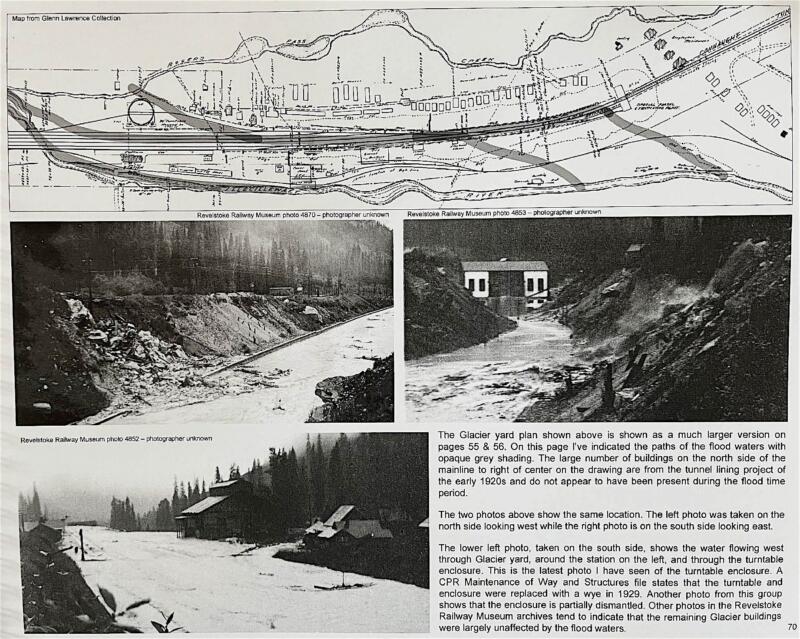1798 Under Mount Macdonald
Canadian Pacific Railway on the Revelstoke Division. Volume Six. The Connaught Tunnel — 106 Years of Service
by Douglas R. Mayer
Revelstoke: Revelstoke Heritage Railway Society, 2022
$40.00 / 9781999416850
Reviewed by Robert D. Turner
Available from the Revelstoke Railway Museum, P.O. Box 3018, 719 Track Street West, Revelstoke, BC, V0E 2S0 (railwaymuseum.com) for $40.00 plus postage and GST
*
 The Connaught Tunnel, in the Selkirk Mountains of British Columbia, has long been an engineering landmark on the transcontinental mainline of the Canadian Pacific Railway through what are often called “the Rockies.” This new book by Doug Mayer presents its history of over 100 years in a very well-illustrated and carefully documented new volume. Doug has spent many years researching the background for this book, locating and identifying photos, and doing a lot of onsite exploration to make all the pieces of the story fit together. Living in Revelstoke, he is close to the railway and knows its route through the mountains well. Moreover, he has been able contact many people who have worked on the railway through the Selkirks.
The Connaught Tunnel, in the Selkirk Mountains of British Columbia, has long been an engineering landmark on the transcontinental mainline of the Canadian Pacific Railway through what are often called “the Rockies.” This new book by Doug Mayer presents its history of over 100 years in a very well-illustrated and carefully documented new volume. Doug has spent many years researching the background for this book, locating and identifying photos, and doing a lot of onsite exploration to make all the pieces of the story fit together. Living in Revelstoke, he is close to the railway and knows its route through the mountains well. Moreover, he has been able contact many people who have worked on the railway through the Selkirks.
This detailed book outlines the construction and operation of the CPR line through Rogers Pass including the miles of timber snow sheds that had to be built to keep the railway functional in winter. It then focuses on the Connaught Tunnel and explains its importance for increasing capacity of the CPR mainline and reducing operating costs. After carefully explaining the planning, location and construction of the tunnel and its ventilation systems, the book goes on to document the operation of the railway through the mountains and, in particular, through the tunnel and its approaches.
Completed by early December 1916, the 5.02 mile long (8.08 km), tunnel, which had double tracks, was at that time called the Selkirk Tunnel. It was officially opened the following July by Prince Arthur, the Duke of Connaught, who was the Governor General of Canada. With his wife, Princess Louise, and their daughter Princess Patricia, he was on a tour that took them to many parts of British Columbia. The tunnel was soon renamed for the popular Duke and and became officially the Connaught Tunnel. At the time it was the longest railway tunnel in North America and remained so until the opening of the Moffatt Tunnel in Colorado in 1928.
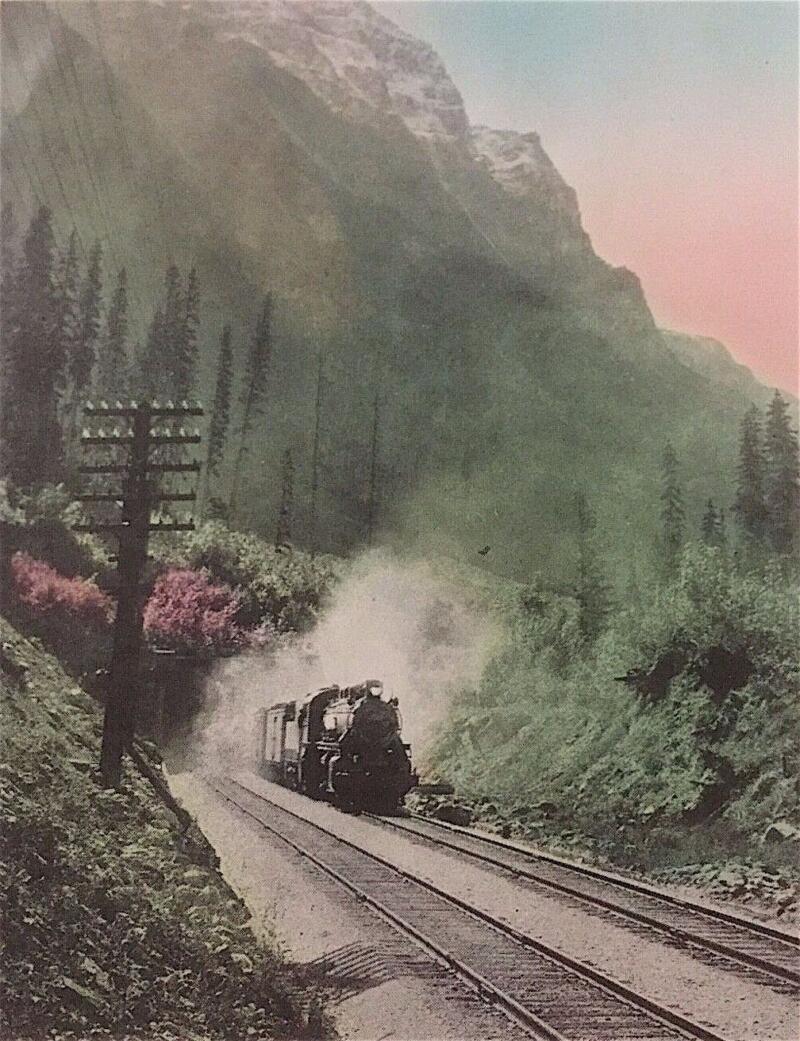
The Connaught Tunnel’s story didn’t end with its opening. It was lined with concrete, changes were made to the yards at Glacier Station, it was damaged or blocked by floods and slides, and there were fires in the west portal’s fan and ventilation system. Much later, the clearance in the tunnel was increased by removing the second track, centring a single track, and then by lowering the roadbed to permit the carriage of larger containers, which have come to dominate much of the traffic on the railway. Steam locomotives gave way to diesel-electrics in the 1950s and train tonnages grew as did the transport of bulk commodities including wheat, potash and coal. This traffic was destined for export from Vancouver and moving long and heavy trains over the mountains was an ongoing challenge and a very expensive one. By the 1970s, the line through Rogers Pass was becoming an expensive limitation to the railway system’s capacity as traffic on the railway continued to grow. The solution was to bore and blast a new, even longer tunnel, lower in elevation, under Rogers Pass. This one became the Mount Macdonald Tunnel.
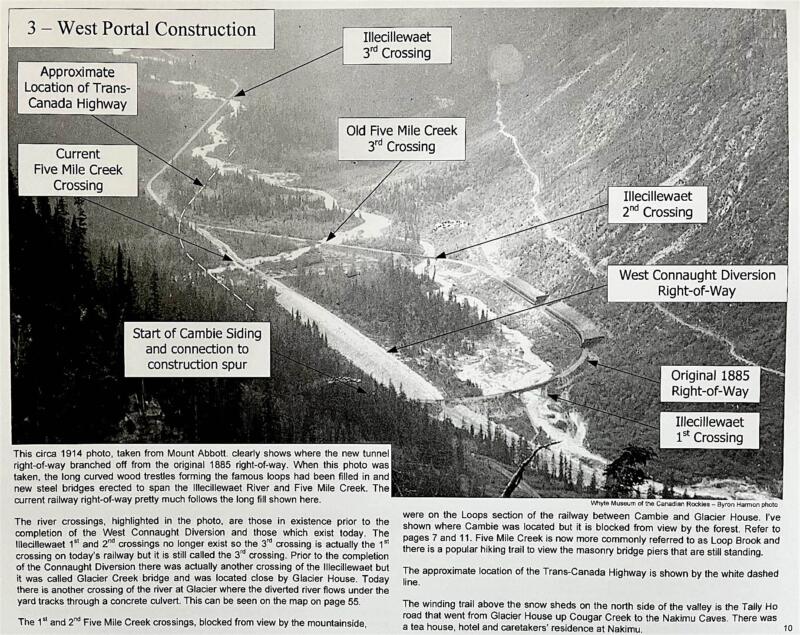
The presentation of the book is straightforward. Typically, there is a large photo or two with a detailed caption and discussion on each page. There are over 125 photos, of which about two-thirds are black and white, with more recent images frequently in colour. The reproduction is very good. Some of the photos have annotations about the locations of places or features of interest in the photos, and I found these very interesting and helpful. There are also 22 maps and reproductions of engineering drawings that detail the route, the methods of drilling, blasting and mucking out the tunnel, the related railway yards and construction equipment along with the tunnel portals, ventilating system and structures.
In July 1986, I visited the construction site of the new 9.11-mile (14.66 km) Mount Macdonald Tunnel, that was bored, blasted and built to increase capacity on the CPR mainline and reduce operating costs. At that time, the east side was in over a mile and a massive tunnel-boring machine was in operation. From the other side, more traditional drilling and blasting techniques were being employed. Walking and riding part way in the dark tunnel to the face of the excavation, was my first major encounter with being that far underground, and it was fascinating and a little intimidating. It gave me time to consider how the work had been done rather differently on the Connaught Tunnel, three-quarters of a century before, without the aid of a boring machine, and to reflect on the changes in technology that were being employed.
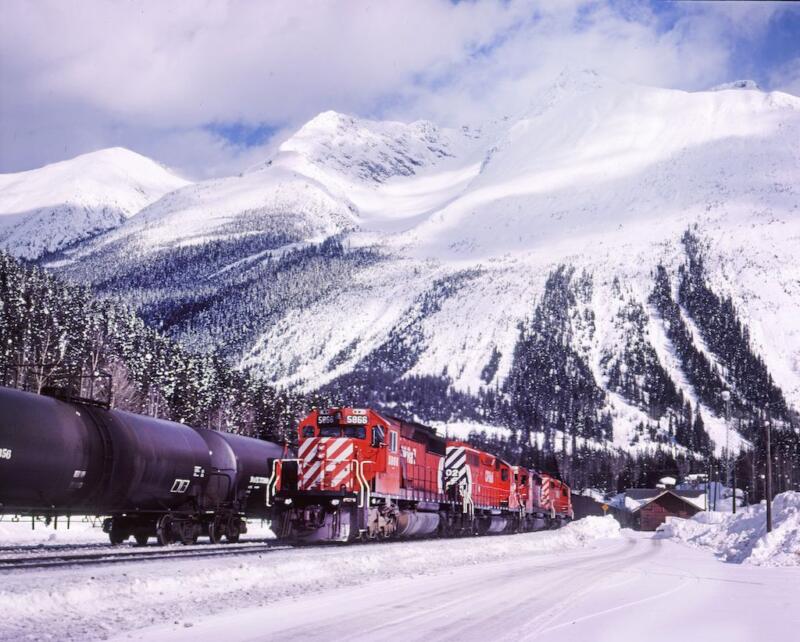
Later, I had the opportunity to ride with an experienced railway “pusher” engine crew on the Connaught Tunnel route in October 1988 and it was another educational and fascinating trip. It left me in no doubt about why the railway was working on the new tunnel, that was nearing completion below me, deep in the Selkirks, to relieve the congestion on the mainline. A dozen, three-thousand-horsepower diesel locomotives, were used on the train — four on the front, two more were many cars back, and six more, were cut in as pushers or helpers. The logic and financial imperative of boring and blasting a new tunnel to reduce the grades over Rogers Pass, while at the same time evading deep mountain snows and slides, was crystal clear. History was repeating itself in many ways.
The new tunnel did not replace the enduring Connaught Tunnel; they are complementary. The Connaught continues to be an important part of Canadian Pacific’s route through the Selkirks and still sees frequent trains, mostly eastbound, with the new Mount Macdonald Tunnel handing the majority of the westbound, heavily loaded grain, potash and coal trains. The empty trains, usually take the higher line through the Connaught Tunnel, effectively double-tracking this section of the railway. Today, there are no Canadian Pacific of VIA passenger trains, like the famous Canadian, rolling through the Selkirks and Rockies, but the deluxe tour train, the Rocky Mountaineer does so each year from mid-April to mid-October. For anyone riding these trains it takes a full 10 minutes to pass through the tunnel, assuming a speed of 30 mph (50 kmh). It is a long, dark tunnel and perhaps a slightly mysterious and claustrophobic experience, no question! But, of course, that is part of the adventure and interest.
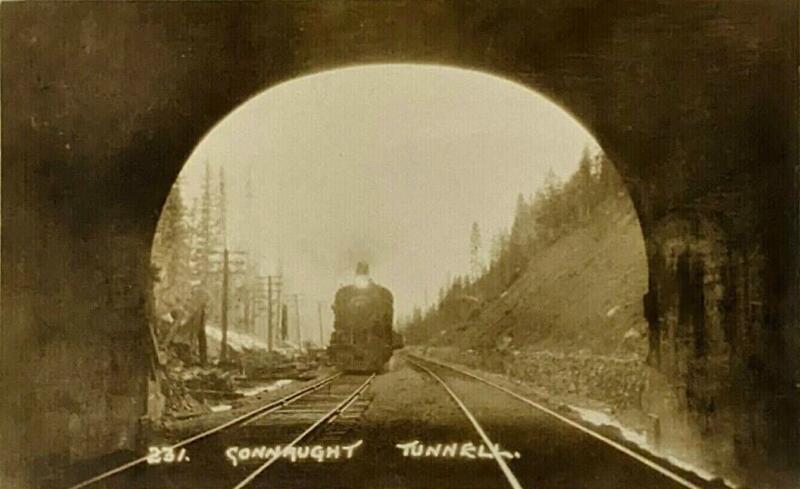
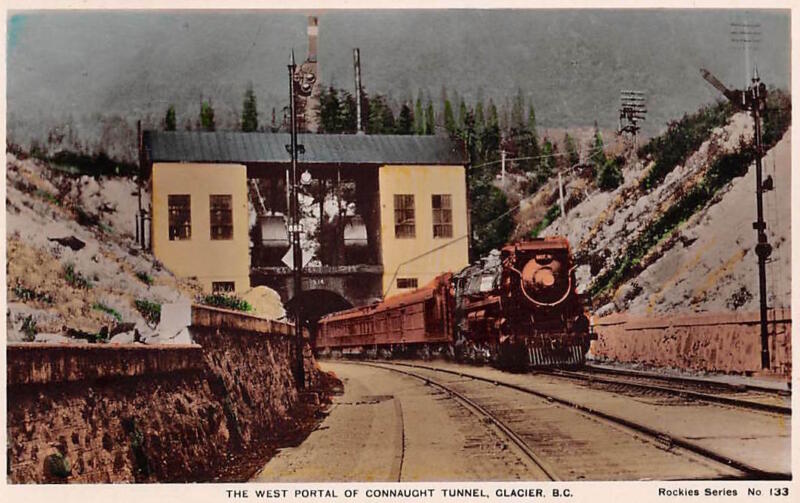
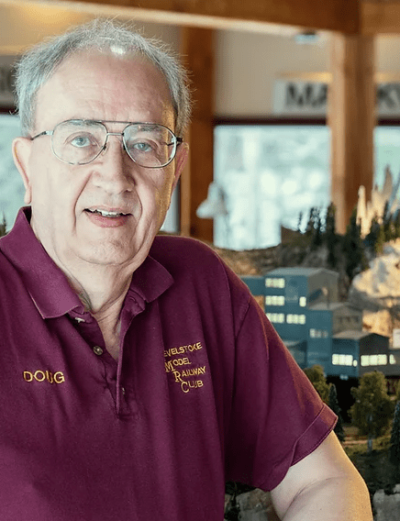
Over a century after its opening, the Connaught Tunnel remains a landmark of Canadian engineering and it certainly warrants a book of this size and quality to document its history and importance. And the Revelstoke Heritage Railway Society and the Revelstoke Railway Museum are the ideal publishers for this book. Thanks to Douglas Mayer and the Revelstoke Museum for making this most interesting, historically important, and detailed study available. Anyone interested in the CPR or major engineering projects in Canada, and travellers through the Selkirk Mountains (by road or rail) will be sure to enjoy this book. For more information and photographs on the CPR’s Revelstoke Division check out Doug Mayer’s earlier books in this series, also available from the Revelstoke Railway Museum. They cover many aspects of the railway’s history and operations. If you travel through Rogers Pass on the Trans-Canada Highway, do take time to explore the historic sites, stop at vantage points along the way where the working railway is visible, or hike some of the original grades over Rogers Pass in Glacier National Park. Visit the Revelstoke Railway Museum and, in Rogers Pass itself, Parks Canada’s beautiful and informative Rogers Pass Discovery Centre.
Proceeds from the sale of this book and the previous volumes go to help support the Revelstoke Railway Museum and its programs. Revelstoke has been a centre of operations for the Canadian Pacific Railway since the days of the CPR beginning service across Canada in the 1880s. It is a natural location for a railway museum, and the museum is a fine one with an important collection of locomotives and rolling stock, as well as having many interpretative displays. This book, and the others in this series, provide an excellent way for the museum to present and preserve historical information for a broad audience in a form that will be available for reference, general interest and educational purposes. And that is exactly what carefully-researched historical publications and first-class museums should do. As you probably guessed, I really enjoyed this book and learned a lot from it.

*
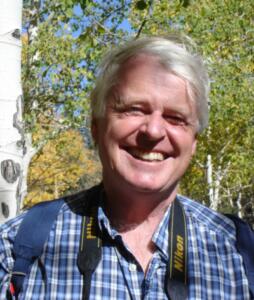
Robert D. Turner is Curator Emeritus, Royal BC Museum, where he was Chief of Historical Collections for many years. He is the author of 18 books on transportation history and 400 articles and book reviews. Over 4,000 of his photographs have been published in books, magazines, and exhibits. He is a Fellow of the Royal Canadian Geographical Society (FRCGS), and in June 2022 was awarded an honorary doctorate by Simon Fraser University. As a heritage consultant, he has extensive experience with heritage sites, historic railway operations, restoration projects, and museum developments from many countries. Visit his website here. Editor’s note: Robert Turner has also reviewed books by Carl Mulvihill, John Wiznuk, and John Cowan for The British Columbia Review, and his book The Klondike Gold Rush Steamers: A History of Yukon River Steam Navigation (Harbour Publishing, 2019) was reviewed by Ken Coates.
*
The British Columbia Review
Interim Editors, 2023-24: Trevor Marc Hughes (non-fiction), Brett Josef Grubisic (fiction)
Publisher: Richard Mackie
Formerly The Ormsby Review, The British Columbia Review is an on-line book review and journal service for BC writers and readers. The Advisory Board consists of Jean Barman, Wade Davis, Robin Fisher, Barry Gough, Hugh Johnston, Kathy Mezei, Patricia Roy, Maria Tippett, and Graeme Wynn. Provincial Government Patron (since September 2018): Creative BC. Honorary Patron: Yosef Wosk. Scholarly Patron: SFU Graduate Liberal Studies.
“Only connect.” – E.M. Forster
